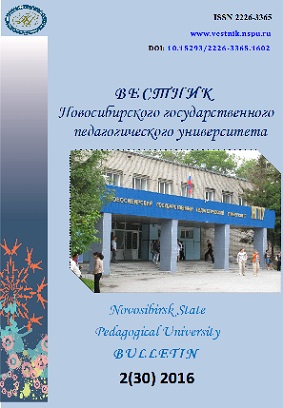Универсальный и активный словарь: развитие лексикографической традиции или возвращение к истокам
Universal and active dictionaries: development lexicographic traditions or return to the roots
Author(s): Elena Yurievna Bulygina, Tatiana Alexandrovna TripolskayaSubject(s): Philology
Published by: Новосибирский государственный педагогический университет
Keywords: Lexicography; active dictionary; pragmatic component; semantics of the word
Summary/Abstract: The general idea of the active type dictionary was introduced by A. Rey and S. Delesalle: “a dictionary begins to live from the moment when it presents not only meaning of the words but their functioning” (1983). The concept of Active dictionary was further developed in Russian studies. If A. Rey and S. Delesalle focused on pragmatic information in a dictionary entry, Russian lexicographers dis-cuss the problem of the relation between linguistic and encyclopedic information in the diction-ary, offering to "walk away" from the minimization of the classical dictionaries (Gak). In the modern theoretical lexicography it is of importance to create a universal/active dic-tionary: the purpose of the dictionary, the recipient, the amount of lexicographic information, methods of presentation, sources and metalanguage (Apresyan). Recognizing all the problems associated with the new type of dictionary let`s focus on the issues of volume and the ratio of semantic and pragmatic information about the word in a bilingual active dictionary. The main concept of the active bilingual lexicography is reflected in the French-Russian active type dictionary, which has a different purpose than active monolingual dictionaries and "aims to explicitly show the relations between language and speech: show the transition from a system of word meaning and its translation to typed contextual meanings and their translation, noting the diverse resources available to the target language to convey various meanings of the source language" (Gak, Triomphe). The authors follow the cognitive-encyclopedic trend, and tend to include certain infor-mation not typical of a bilingual dictionary (such thematic groups as "soccer" and "chess" vo-cabulary, kinship terms, card games, etc.), or information on composition and functioning of causal verbs, the speech genres of Fear or Prohibition, as well as the ways of expressing Inter-rogation or Negation, etc. Such information that facilitates mastering the system and functional parameters of the language. In this case, we can speak about a different recipient of the dic-tionary – about the user who is mastering a foreign language. The user simultaneously receives knowledge of language and knowledge about language. Pragmatic information (the emotional-evaluative, ethnic, cultural, ideological, gender, social, etc.) is not yet conceptually comprehended as an object of lexicographic description. The dictionary information is often incomplete, inconsistent and controversial.
Journal: Вестник Новосибирского государственного педагогического университета
- Issue Year: 6/2016
- Issue No: 2
- Page Range: 7-23
- Page Count: 17
- Language: Russian

